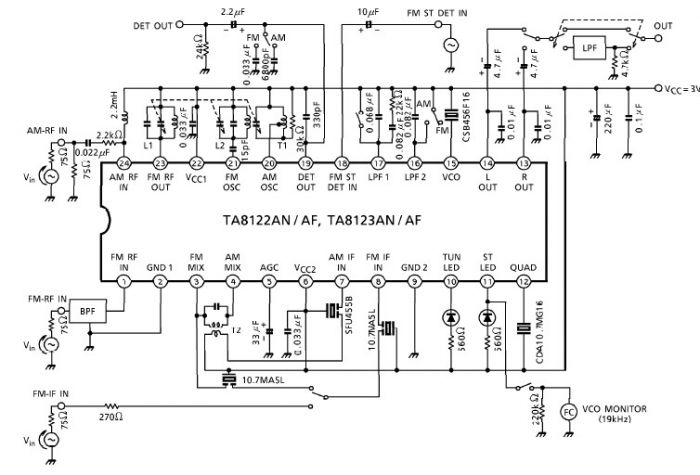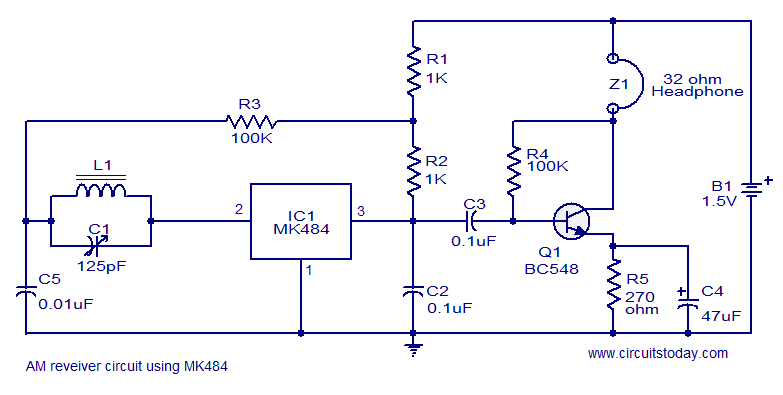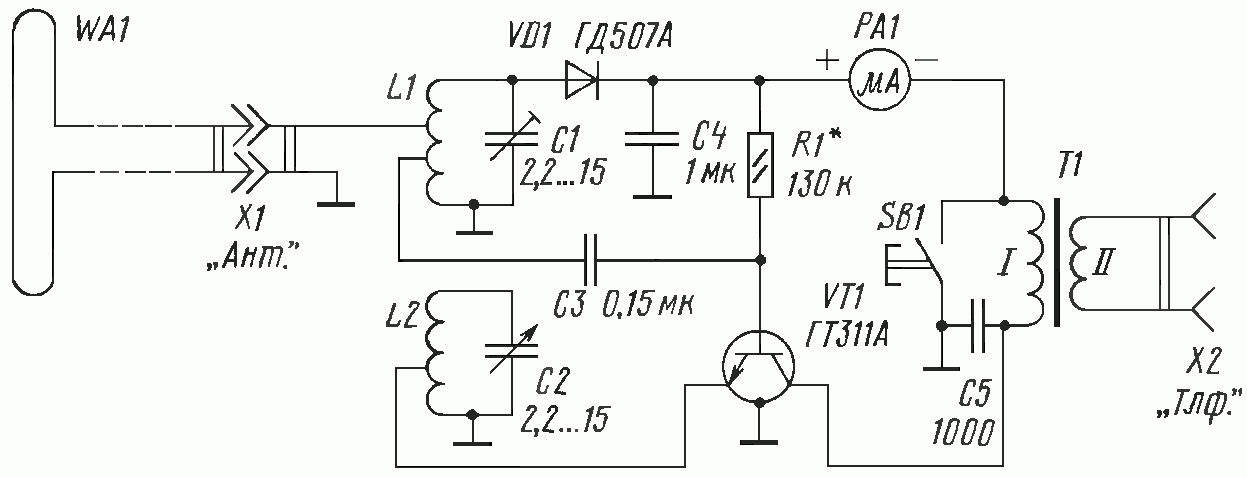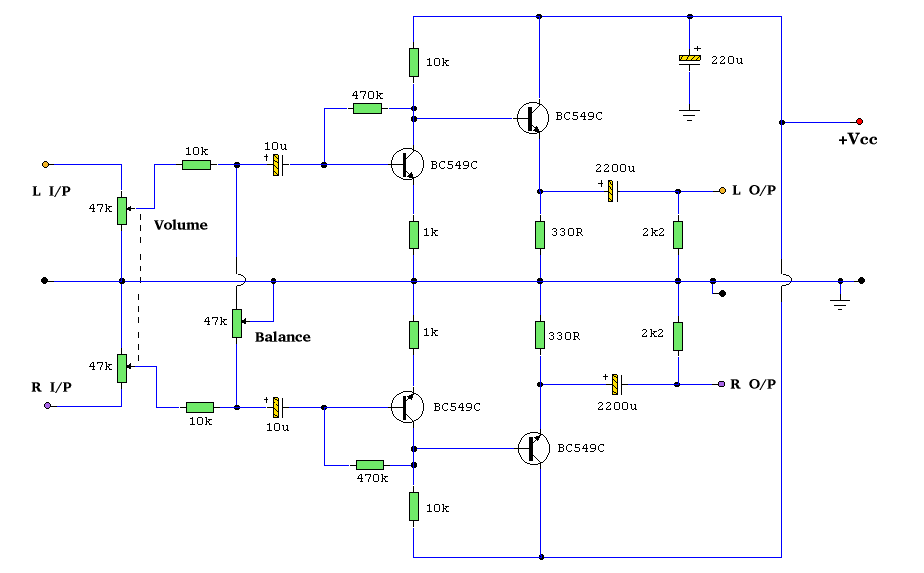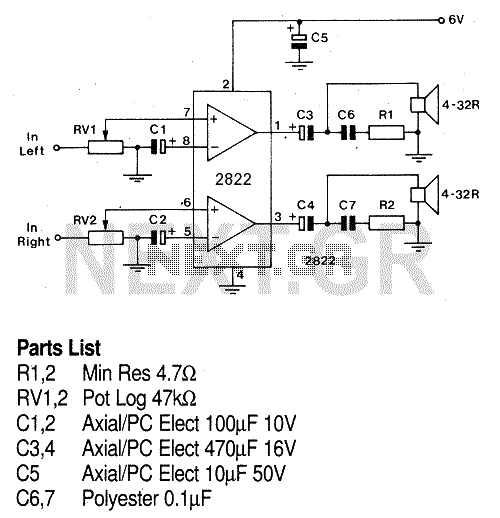
wireless ir headphone receiver

A photodiode D1 feeds a high-gain infrared (IR) remote control preamplifier IC, specifically a CA3237E. U2 is a phase-locked loop (PLL) frequency modulation (FM) detector tuned to approximately 100 kHz. The output from the detector is amplified by U3, which is capable of driving a speaker or a set of headphones.
The circuit begins with the photodiode D1, which serves as the light-sensitive element that detects infrared signals emitted by a remote control. When IR light strikes the photodiode, it generates a small photocurrent proportional to the intensity of the incoming light. This current is then fed into the high-gain preamplifier IC, CA3237E, which amplifies the weak signal from the photodiode to a more usable level.
Subsequently, the amplified signal is sent to the PLL FM detector, designated as U2. This component is tuned to a frequency of around 100 kHz, allowing it to demodulate the frequency-modulated signal received from the preamplifier. The phase-locked loop configuration ensures that the output remains synchronized with the incoming signal, providing a stable and reliable detection of the transmitted data.
The output from the PLL detector is then processed by U3, which serves as an additional amplification stage. This stage is critical for driving audio output devices such as speakers or headphones. The amplification ensures that the audio signal is sufficiently strong to be heard clearly when played through these devices.
Overall, this circuit design effectively combines photodetection, signal amplification, and audio output, making it suitable for applications in IR remote control systems. The careful selection of components and their configuration allows for efficient signal processing and reliable performance in various electronic devices.A photodiode Dl feeds high gain IR remote control preamp 1C, a CA3237E. U2 is a PLL FM detector tuned to around 100 kHz. The detector output is amplified by U3 and it can drive a speaker or a set of headphones. 🔗 External reference
The circuit begins with the photodiode D1, which serves as the light-sensitive element that detects infrared signals emitted by a remote control. When IR light strikes the photodiode, it generates a small photocurrent proportional to the intensity of the incoming light. This current is then fed into the high-gain preamplifier IC, CA3237E, which amplifies the weak signal from the photodiode to a more usable level.
Subsequently, the amplified signal is sent to the PLL FM detector, designated as U2. This component is tuned to a frequency of around 100 kHz, allowing it to demodulate the frequency-modulated signal received from the preamplifier. The phase-locked loop configuration ensures that the output remains synchronized with the incoming signal, providing a stable and reliable detection of the transmitted data.
The output from the PLL detector is then processed by U3, which serves as an additional amplification stage. This stage is critical for driving audio output devices such as speakers or headphones. The amplification ensures that the audio signal is sufficiently strong to be heard clearly when played through these devices.
Overall, this circuit design effectively combines photodetection, signal amplification, and audio output, making it suitable for applications in IR remote control systems. The careful selection of components and their configuration allows for efficient signal processing and reliable performance in various electronic devices.A photodiode Dl feeds high gain IR remote control preamp 1C, a CA3237E. U2 is a PLL FM detector tuned to around 100 kHz. The detector output is amplified by U3 and it can drive a speaker or a set of headphones. 🔗 External reference

